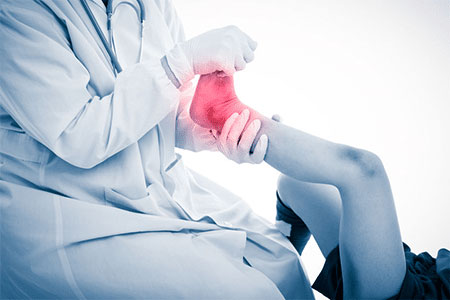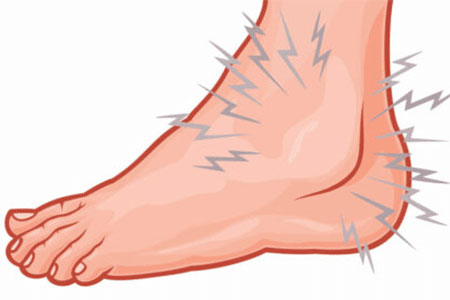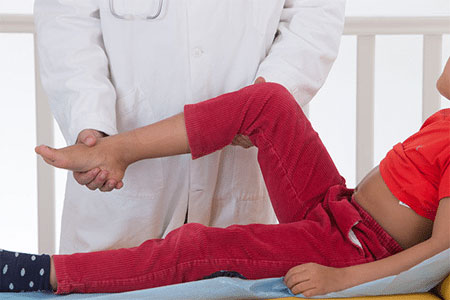Understanding the Needs of Children with Foot Conditions – Footwear Recommendations

Has your child been diagnosed with a foot condition such as flat feet, in-toeing, toe walking, etc. and you are wondering what might be the best conservative treatment approach? I have been fitting children’s shoes for over a decade, working closely with pediatric podiatrists who refer families to the shoe store where I work to have children fitted for the correct pair of shoes and orthotics. Children’s feet are unique because they’re still developing, and what might seem like a small issue can lead to more complex concerns down the road.
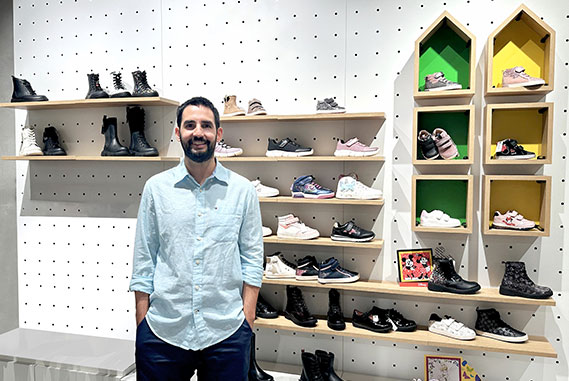
I’m here to help you understand the role you play as a parent or caretaker. Routine visits to your specialized local shoe store and listening to your child’s complaints can make a world of difference. Inspecting your child’s shoes for signs of abnormal wear and tear is also important. Acting early can prevent more severe complications and ensure your child remains as active and happy as possible!
Parents need to understand that they only have a small window of opportunity to make a significant change in their child’s foot structure and gait mechanics. I have noticed how some medical professionals recommend waiting until the child reaches the age of 5 or 6 to intervene. If you notice something wrong with your child’s walking gait or if your child is complaining about foot or leg pain you need to intervene as soon as possible.
What Are the Most Common Foot Conditions in Children?
So here’s a picture of some of these conditions: flat feet, clubfoot, toe walking, in-toeing, and ingrown toenails are a few examples. These problems range from structural abnormalities to uncomfortable nuisances, but they all have one thing in common – they can be treated by providing children with the correct types of shoes. In some cases, a pair of orthotics might be needed as well, but this depends on the degree of your child’s foot condition.
Signs and Symptoms: When to Seek Care
Children aren’t always able to express what feels wrong, so it’s crucial to pay attention to non-verbal cues like limping or refusing to walk. Pain, swelling, or a noticeable change in the structure of the foot, like flat feet or high arches, calls for a visit to the pediatrician or a podiatrist.
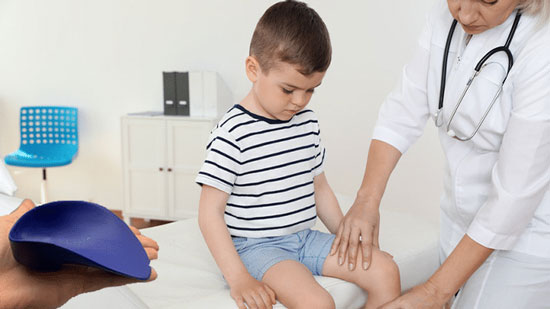
Treatment Approaches: From Conservative to Surgical
Navigating the treatment landscape for children with foot conditions can feel overwhelming, but I’m here to help you with a breakdown of the approaches that are available. Let’s begin with conservative treatments because often, less is more when it comes to pediatric care.
Conservative management strategies are the first line of defense and often involve simple modifications such as rest or activity modification, stretching exercises, physical therapy, and the use of corrective footwear. Shoes with proper support can make a significant difference, and in the next section, we’ll explore the importance of choosing the right footwear for children with foot challenges in more detail.
The Role of Footwear in Managing Pediatric Foot Conditions
Choosing the right footwear isn’t just a fashion statement, especially for children with foot conditions. It’s about function and comfort. You’ll want to select shoes that offer support where it’s needed without exacerbating any existing issues.
I’m here to help you with narrowing down the factors that make good footwear choices for children with special foot care needs. We’re looking at factors like size, material, arch support, and flexibility.
Something so simple such as providing your child with the correct pair of shoes can make a world of difference. Let me prove it to you.
Image of a Toddler Standing Barefoot
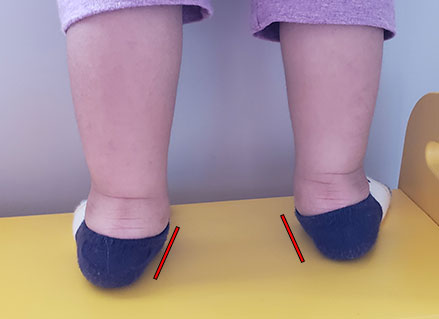
Image of the Same Toddler Wearing Supportive Shoes
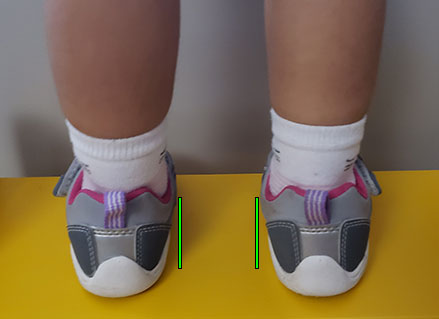
Image of an Older Child Standing Barefoot
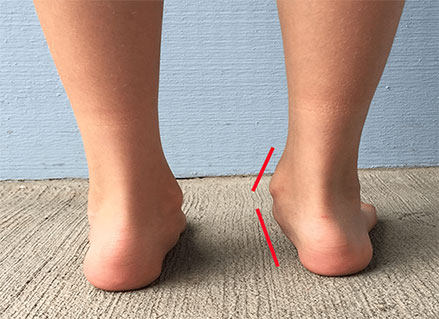
Image of the Same Older Child Wearing Supportive Shoes
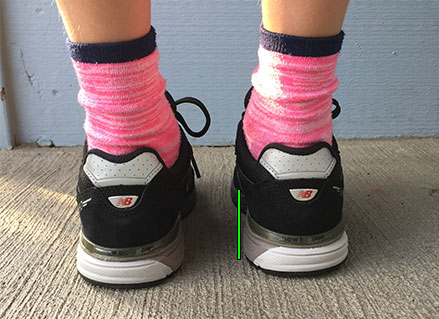
Pretty amazing, right? These are images of families who don’t have a specialized children’s shoe store in their area and I was able to help them online. I am confident I will be able to help your child as well.
What Makes the Shoes I Recommend Effective for Kids with Foot Conditions?
1️⃣ Stable base of support to help align your child’s feet and reduce the impact that your child’s feet take when they come in contact with the ground.
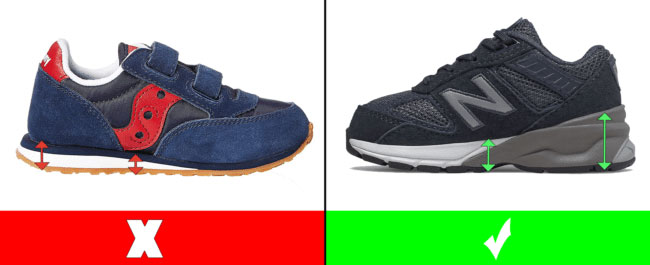
2️⃣ Straight lasts to help improve your child’s foot posture and walking gait.

3️⃣ Rigid outsoles to help keep your child’s feet supported and stable.

Can Supportive Shoes Make Your Child’s Feet Weaker?
One common concern many families have is whether supportive shoes can make their child’s feet weaker. We are not making the muscles weak. All I recommend doing is giving the child structural support which is not going to take away from the musculature.
One analogy I like to give families is how supportive shoes are like glasses for their children’s feet. When you have bad eyes you wear glasses, does it cure your eyes? No, but it makes you see better and you can function normally. Supportive shoes are like glasses for your child’s feet.
The Importance Of Providing Children with the Correct Shoe Size
Many therapists explain to me how they encounter many children with foot conditions who wear shoes that don’t fit properly, which makes the condition harder to manage. Shoes that are too tight or too loose can lead to complications, so it’s about finding that perfect fit.
I created a virtual shoe fitting service that has been helping families from all over the world find exactly what shoe size they need to buy for their child. In that resource, I help families retrieve their child’s exact foot shape (narrow, medium, wide, extra wide, high instep).
Now, lifestyle adjustments come into play. This isn’t just about selecting the right shoes; it’s also about incorporating daily practices that can improve overall foot health. Simple measures like not walking barefoot on hard surfaces and encouraging low-impact exercises can make a big difference.
Supportive Shoes for Children with Foot Conditions
I have created many resources over the years that cover the best footwear for children with foot problems. However, I prefer to provide shoe recommendations based on the child’s specific foot shape and foot condition, as that’s the only way to make sure the child will get the full benefits that the shoes have to offer.
Contact Me for Specific Shoe Recommendations Tailored to Your Child’s Unique Foot Shape
Without a doubt, your child’s shoe needs can vary depending on their age, activity level, and any specific foot conditions they may have. If you have any questions or need any further assistance, you can also contact me via email and I will get back to you as soon as possible. I am happy to help you find the correct pair of shoes for your child.
You don’t need to buy the most expensive shoes to keep your children’s feet healthy. However, it is important to note that usually the cheaper the shoe is, the less quality, thought, and care shoe companies put into that shoe.
In my opinion, if your child’s condition isn’t improving with these basic steps, the next option to consider might be orthotics. Orthotic devices can provide support, alleviate discomfort, and correct gait abnormalities.
Many foot conditions in children are successfully managed and even resolved with conservative methods. Now, while these noninvasive strategies can be very effective, there are cases where the condition may persist or worsen. That’s when surgery might come into the conversation. It’s crucial not to jump to conclusions about surgery without a thorough evaluation from a specialist. If surgery is recommended, know that advances in medical procedures are continually improving outcomes and recovery times for children.
Supporting Children with Foot Conditions: Emotional and Social Considerations
Children may feel self-conscious about their appearance or abilities, and it’s essential to address these feelings directly. I have seen this happen mostly with children who wear foot braces such as AFOs or SMOs. Be proactive about talking with teachers and other parents to foster an inclusive environment. After all, every child deserves to play, participate in activities, and just be a kid without feeling hindered by their condition.
Don’t Assume Your Child’s Foot or Leg Pain Are Growing Pains
Could that complaint of “tired legs”‘” be more than just an after-effect of play? When is it typical growing pains, and when could it signal something like Sever’s disease, a common heel problem in kids? Differentiating between normal developmental changes and potential concerns is key to proactive care.
How many kids have growing pains that are ignored? Almost all of them! Why doesn’t the child have pain in the arms? Their arm is growing as well, or in the neck, the teeth, the scalp… The reason is that the foot is causing the growing pain.
Physical therapy is another cornerstone of noninvasive treatment, offering exercises specifically designed to strengthen the muscles and improve mobility.
Let me know in the comments section below if you have any questions. It would be great if you could share your own experiences and whether you have found a specific shoe that worked well for your child’s feet.

